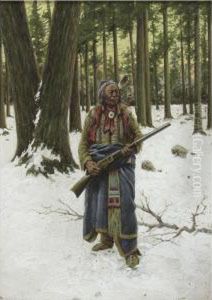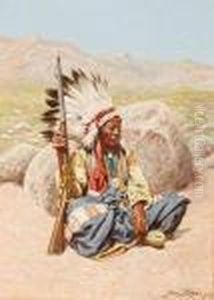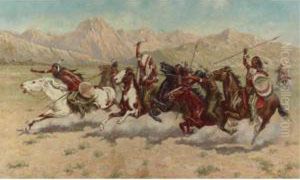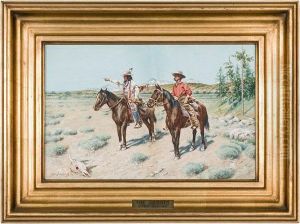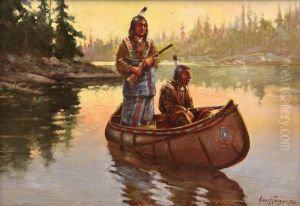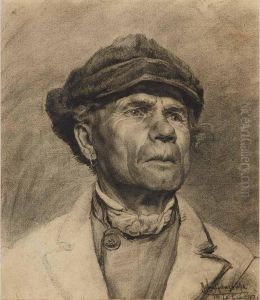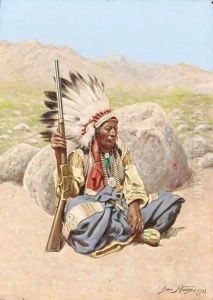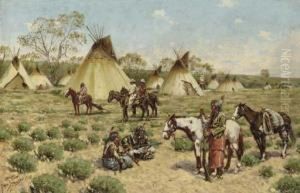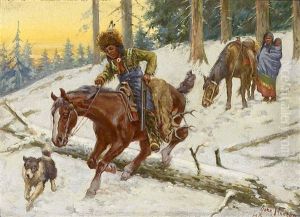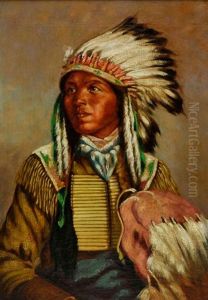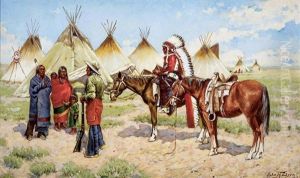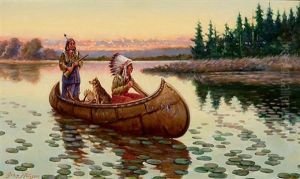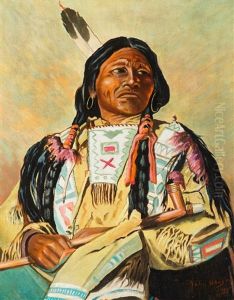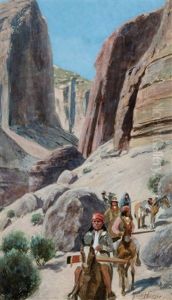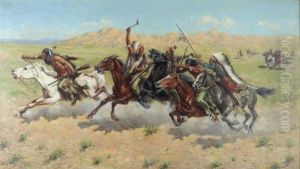John Hauser Paintings
John Hauser was an American painter known for his portrayals of Native American life and the landscapes of the American West. Born on January 30, 1859, in Cincinnati, Ohio, Hauser developed an early interest in art and pursued his education at the McMicken School of Design in Cincinnati. Furthering his studies, he traveled to Europe, where he studied at the Royal Academy in Munich, Germany, a popular destination for American artists in the late 19th century.
During his time in Munich, Hauser was influenced by the realism and detail-oriented style prevalent in German art at the time. Upon returning to the United States, he settled in the West, where he became deeply interested in Native American culture. His interactions with various tribes, including the Navajo, Apache, and Pueblo peoples, provided rich material for his art.
Hauser's paintings often depicted Native Americans in everyday scenes and traditional ceremonies, capturing the essence of their culture with respect and accuracy. He was known for his strong use of color and ability to convey the textures of the landscapes and scenes he portrayed.
Apart from his artistic career, Hauser was also involved in efforts to preserve Native American culture and advocated for the rights of indigenous people at a time when their way of life was under threat. His work is considered an important historical record of Native American life at the turn of the 20th century.
John Hauser's contributions to art were cut short when he passed away on August 6, 1913, in Cincinnati. Despite his relatively short career, his paintings remain celebrated for their cultural significance and artistic merit. His works can be found in various museum collections and continue to be appreciated by art historians and enthusiasts alike.


